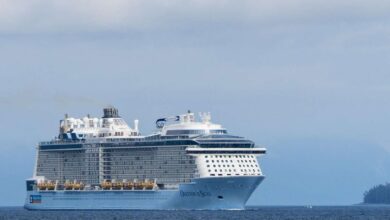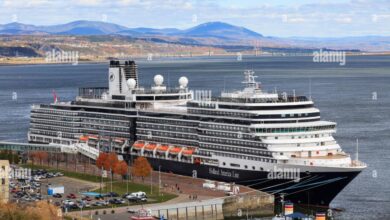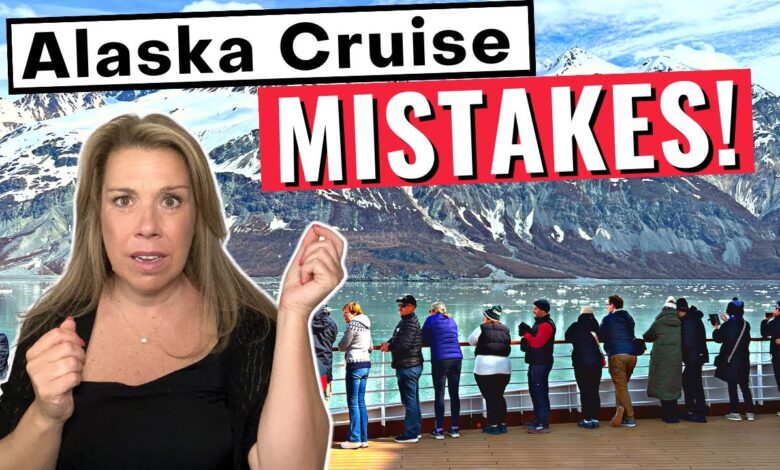
Alaska Proposes Cruise Tax Offset
Alaska proposes to offset municipal cruise taxes, a move that could significantly impact local economies and the cruise industry. This initiative delves into the historical context of cruise taxes in Alaskan municipalities, exploring their evolution, current revenue streams, and how they’re currently being utilized. It also investigates the proposed offset mechanisms, considering their economic, social, and environmental implications, alongside the legal and regulatory framework surrounding them.
The proposal examines various potential impacts, including on cruise ship operators, local businesses, and the tourism sector. It also assesses public perception, stakeholder engagement, alternative approaches, and potential implementation strategies. This comprehensive analysis seeks to illuminate the complexities of this initiative and offer a nuanced understanding of its potential consequences.
Background of Municipal Cruise Taxes in Alaska
Alaska’s municipalities have a long history of collecting cruise taxes, a practice deeply intertwined with the state’s tourism industry. These taxes have evolved significantly over time, reflecting shifts in the cruise industry and local needs. Understanding this evolution is crucial for evaluating the current system and considering potential adjustments.The revenue generated from these taxes plays a significant role in local budgets, supporting essential services and infrastructure projects.
This revenue stream directly impacts the ability of communities to provide public services to their residents, and thus understanding the impact of these taxes is essential for informed discussion.
Historical Overview of Cruise Taxes
Cruise taxes in Alaska’s municipalities began as a relatively straightforward method to fund services directly impacted by the cruise industry’s growth. Early taxes often focused on the number of passengers disembarking or the revenue generated by cruise lines. Over time, the complexity of the tax structures has increased, incorporating factors like the length of the cruise ship’s stay and the number of cruise ship visits.
These changes reflect the growing sophistication of the cruise industry and the increasing demands on local infrastructure.
Evolution of Cruise Taxes
The initial cruise taxes were often simple per-passenger levies. Subsequently, municipalities began incorporating factors like the length of stay of the cruise ships. This adjustment aimed to capture the full economic impact of the cruise ships’ visits, rather than just the disembarkation numbers. More recently, there’s been a move towards taxes based on the cruise ship’s capacity, reflecting the growing size and impact of modern cruise vessels.
This evolution has aimed to capture a more accurate reflection of the financial impact of the industry on the community.
Current Revenue Generated and Impact on Local Budgets
The current revenue generated from cruise taxes varies significantly among Alaska’s municipalities. It’s often a substantial component of local budgets, supporting various community needs. For instance, revenue generated from cruise taxes may be used for road maintenance, port improvements, or funding for community services. The specific allocations differ depending on the municipality and its unique needs. The exact figures are publicly available in the annual reports of the respective municipalities.
Different Types of Cruise Taxes Collected in Alaska
Alaska municipalities collect various cruise taxes, each with its own unique characteristics. These include:
- Passenger-based taxes: These taxes are levied on each passenger disembarking. This type of tax is straightforward to administer but might not fully reflect the economic impact of longer cruise ship visits or the use of larger vessels.
- Revenue-based taxes: These taxes are levied on the revenue generated by the cruise lines. This approach attempts to account for the economic impact of the cruise ships, but the collection and enforcement process may be more complex.
- Dockage fees: These fees are levied on the cruise ships for use of the port facilities. This approach directly addresses the cost of providing port services to the cruise ships.
Examples of How Cruise Taxes are Used by Municipalities
Municipalities utilize cruise tax revenue for a wide array of community needs. Examples include:
- Infrastructure development: Funding port improvements, upgrading roads, and enhancing community infrastructure directly related to cruise ship operations.
- Community services: Supporting local schools, parks, libraries, and other essential community programs.
- Economic development initiatives: Investing in projects that enhance the local economy and create job opportunities.
Proposed Offset Mechanisms
Alaska’s cruise industry, while a significant economic driver, generates considerable municipal tax revenue. However, these taxes often burden local communities that depend on the cruise industry for jobs and economic activity. Offsetting these taxes with alternative revenue streams aims to balance the benefits and burdens of the industry, ensuring sustainable development. This section explores the proposed methods for offsetting cruise taxes, detailing the specific financial instruments being considered, and drawing comparisons with successful programs elsewhere.The core principle behind these proposals is to find ways to redirect cruise tax revenue into programs that directly benefit the communities impacted by cruise ship activity.
This approach seeks to ensure that the economic benefits of the industry are more equitably distributed.
Alaska is proposing a way to offset municipal cruise taxes, which is a smart move to boost the industry. With the recent updates to the Norwegian Joy after its China sojourn, as detailed in after china sojourn norwegian joy updated for alaska , it’s clear the cruise line is prioritizing Alaskan ports. This suggests a potential increase in cruise ship activity, which the tax offset aims to support and encourage.
Proposed Offset Mechanisms
This section Artikels the mechanisms proposed for offsetting cruise taxes. These mechanisms are designed to ensure that the economic benefits of the cruise industry are distributed fairly to the local communities. These mechanisms aim to balance the economic gains from the industry with the costs associated with accommodating cruise ships.
- Direct Funding for Infrastructure Improvements: A key component of many offset proposals involves allocating a portion of cruise taxes to fund improvements in local infrastructure, such as roads, bridges, and public utilities. This directly addresses the wear and tear that cruise ships and their associated traffic put on local infrastructure, and provides tangible benefits to residents.
- Community Development Grants: Another proposal involves using a portion of cruise taxes to fund community development projects. This can include grants for local businesses, arts programs, environmental initiatives, or other projects aimed at improving the quality of life for residents. This approach prioritizes long-term economic growth and community development beyond immediate infrastructure needs.
- Environmental Protection Initiatives: Cruise ships can have an impact on the environment, necessitating investment in environmental protection measures. Funds from cruise taxes could be allocated towards environmental monitoring, pollution control, or conservation efforts, addressing the environmental concerns associated with cruise tourism.
- Tourism Promotion and Support: Some proposals suggest allocating a percentage of cruise taxes to promote local tourism. This could involve marketing efforts, funding for visitor centers, or supporting local businesses that cater to tourists. This approach aims to diversify the local economy and generate additional economic opportunities beyond the cruise industry itself.
Financial Instruments
The specific financial instruments used to implement these offsets are critical. The effectiveness of the program hinges on the design and administration of these mechanisms.
- Dedicated Fund Accounts: Establishing dedicated fund accounts to track and manage cruise tax revenue specifically earmarked for offsetting programs would provide transparency and accountability. This ensures that the funds are used for the intended purpose and that there is a clear record of their use.
- Matching Grants Programs: Matching grant programs, where cruise tax revenue is matched with other funding sources, can leverage resources and amplify the impact of the offsetting programs. This can involve collaborations with state or federal governments, or private sector partners.
- Revenue Bonds: Revenue bonds can provide funding for infrastructure projects by allowing the government to borrow money based on projected revenue from cruise taxes. This allows for larger-scale projects that may not be feasible with other funding mechanisms.
Examples of Successful Offset Programs
Several jurisdictions have successfully implemented programs that offset taxes or fees associated with specific industries. Analyzing these programs can provide valuable insights for developing Alaska’s offsetting mechanisms.
- Port of Seattle: The Port of Seattle uses a portion of port fees to fund infrastructure projects and community development initiatives, showing a model for how revenue from a specific industry can be redirected to benefit local communities.
- Other Port Cities: Several other port cities around the world have implemented similar programs, demonstrating the feasibility of using industry revenue to offset costs and improve community well-being.
Comparison with Existing Alternatives
The proposed mechanisms offer a different approach compared to some existing alternatives. Careful consideration of these alternatives ensures that the most effective and equitable approach is chosen.
Proposed Offset Programs
This table Artikels the proposed offset programs, their expected impact, and potential challenges.
Alaska’s proposal to offset municipal cruise taxes is interesting, especially considering the recent $40 million investment in a rebirth at the Ritz-Carlton St Thomas. This impressive renovation project highlights the potential for tourism investment in the Caribbean, which might offer some lessons for how Alaska could potentially stimulate its own economy. Perhaps a similar strategic approach could help offset the revenue lost from cruise taxes and boost Alaskan tourism overall.
| Program | Expected Impact | Potential Challenges |
|---|---|---|
| Infrastructure Improvements | Improved roads, bridges, and utilities; increased community safety and accessibility. | Project timelines, bureaucratic hurdles, potential for overspending. |
| Community Development Grants | Stimulated local economies; improved quality of life for residents. | Ensuring equitable distribution, potential for misallocation of funds, grant application processes. |
| Environmental Protection | Reduced environmental impact; improved water quality, wildlife habitat protection. | Monitoring and enforcement, potential resistance from industry stakeholders. |
| Tourism Promotion | Increased tourism revenue, diversified economy, expanded local business opportunities. | Marketing effectiveness, potential for overspending on promotional campaigns. |
Economic Impacts of the Proposal: Alaska Proposes To Offset Municipal Cruise Taxes
Alaska’s proposed offset of municipal cruise taxes is a complex issue with potential ripple effects throughout the state’s economy. This proposal aims to stimulate cruise tourism by easing the financial burden on cruise operators, but its impact on local businesses, the cruise industry itself, and the broader economy warrants careful consideration. Understanding both the potential benefits and drawbacks is crucial for crafting a policy that fosters economic growth and stability.
Potential Positive Economic Effects
The proposed offsets aim to make Alaska more attractive to cruise lines, potentially increasing the number of ships visiting Alaskan ports and boosting the overall number of tourists. This influx of visitors could lead to increased revenue for local businesses, including hotels, restaurants, and shops. Increased tourist spending could also stimulate job creation in these sectors, particularly in hospitality and service industries.
Furthermore, the possibility of more cruise ship calls could revitalize struggling communities, improving their overall economic health. The increased demand could also lead to improvements in infrastructure, such as port facilities and transportation networks, benefiting the region long-term.
Potential Negative Economic Effects
While increased tourism offers potential benefits, the proposal also carries potential drawbacks. One concern is that the offsetting of taxes could reduce the revenue available for municipal services. Reduced municipal revenue could lead to cuts in essential services like public safety, infrastructure maintenance, and social programs, impacting the quality of life for residents. Furthermore, the proposal may incentivize cruise lines to prioritize maximizing profit from the offset, potentially at the expense of the quality of the visitor experience, if cruise operators prioritize maximizing profit over customer satisfaction.
Impact on Cruise Ship Operators and Profitability
The offsetting of taxes could incentivize cruise operators to increase their operations in Alaska, boosting the overall cruise industry. Cruise operators could potentially experience increased profits due to reduced costs, and this may encourage them to invest more in Alaskan ports and services. However, the profitability of cruise lines will depend on factors such as the volume of passengers and the overall cost of operations.
A potential increase in competition amongst cruise operators might also result from the incentives, impacting the long-term profitability of specific companies.
Impact on Local Businesses and Tourism
The offset could attract more cruise ship passengers, leading to increased demand for local businesses. This could translate to increased sales and employment opportunities for local businesses. However, an overreliance on cruise tourism could potentially make local businesses vulnerable to fluctuations in cruise ship schedules and passenger numbers. Maintaining a diverse tourist base, including independent travelers and other forms of tourism, is vital for long-term sustainability and resilience.
This could also necessitate investments in facilities and services to cater to the specific needs of cruise passengers, possibly impacting the availability of amenities for other visitors.
Comparison of Potential Economic Scenarios
| Economic Scenario | Before Offset | After Offset |
|---|---|---|
| Municipal Revenue | High | Potentially Lower |
| Cruise Ship Calls | Moderate | Potentially Higher |
| Local Business Revenue | Moderate | Potentially Higher |
| Tourism Spending | Moderate | Potentially Higher |
| Job Creation | Moderate | Potentially Higher |
| Municipal Service Quality | Moderate | Potentially Lower |
Social and Environmental Considerations
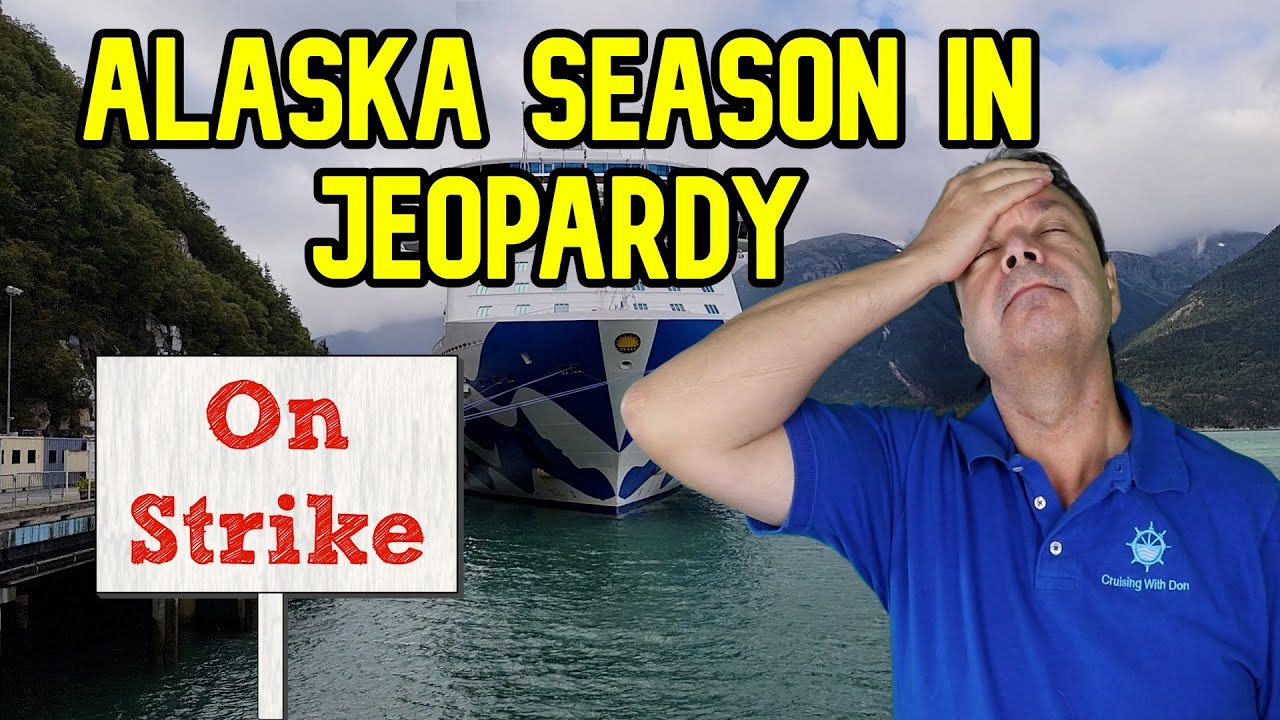
Alaska’s cruise industry, while vital to the economy, can have significant social and environmental impacts on local communities. This proposal to offset municipal cruise taxes aims to mitigate these impacts by reinvesting funds back into the areas most affected. A crucial aspect of evaluating the proposal is understanding the potential positive and negative consequences on both the social fabric and the environment.This section delves into the potential social and environmental consequences of the proposed offset, examining the potential for improved community relations, potential environmental impacts, and providing examples of similar initiatives.
The analysis considers the unique circumstances of Alaska’s communities and their dependence on the cruise industry.
Potential Social Impacts on Local Communities
The offset proposal could foster stronger community relations by providing resources for infrastructure improvements, community programs, and economic development initiatives. By investing in local projects, the proposal aims to address the concerns of residents and make the cruise industry a more sustainable and equitable partnership.
- Enhanced Infrastructure: Funds could be allocated towards upgrading essential infrastructure like roads, schools, and public spaces, benefiting the entire community, not just cruise visitors.
- Improved Public Services: Investments in public services such as healthcare, education, and social welfare programs could lead to improved quality of life for residents.
- Economic Development Opportunities: The offset could potentially support local businesses, create jobs, and stimulate economic growth within the community, reducing reliance on the cruise industry alone.
Potential Environmental Impacts of Proposed Changes
Careful consideration must be given to the potential environmental impacts of the proposed changes, particularly regarding waste management, pollution, and the impact on local ecosystems. Mitigation strategies and monitoring programs will be critical to ensure environmental sustainability.
- Waste Management: The offset proposal should include provisions for improved waste management systems, potentially funding the implementation of better waste collection, recycling, and disposal facilities to handle the increased waste generated by cruise ship activities.
- Pollution Control: The proposal should include funding for measures to control air and water pollution, such as stricter emission standards for cruise ships and investments in monitoring programs to detect and address pollution incidents.
- Ecosystem Protection: Crucial is the protection of local ecosystems and habitats. The offset funds should be directed toward preserving natural resources, supporting sustainable fishing practices, and ensuring that the cruise industry doesn’t negatively impact the environment.
Potential for Improved Community Relations
The offset proposal has the potential to improve community relations by demonstrating a commitment to addressing the concerns of residents and fostering a more equitable partnership between the cruise industry and the local communities. This could involve community consultations, transparent decision-making processes, and clearly defined guidelines for the use of offset funds.
- Community Involvement: Active community engagement and participation in decision-making processes regarding the use of offset funds can foster trust and ownership, enhancing community relations.
- Transparency and Accountability: A transparent system for allocating and monitoring the use of offset funds will be critical in building trust and ensuring that the funds are used effectively to benefit the community.
- Clear Guidelines: Well-defined guidelines for the use of offset funds, including timelines, measurable outcomes, and reporting mechanisms, will demonstrate a commitment to responsible management and accountability.
Examples of Similar Initiatives and Their Outcomes
Several other destinations have implemented similar offset mechanisms to address the social and environmental impacts of tourism. These initiatives demonstrate the potential benefits and challenges of such programs.
| Initiative | Social Outcomes | Environmental Outcomes |
|---|---|---|
| Example 1: [Specific Example – e.g., Dubrovnik’s Cruise Tourism Impact Mitigation Fund] | Improved infrastructure, local job creation, increased community investment. | Reduced pollution levels, improved waste management systems, and sustainable tourism practices. |
| Example 2: [Specific Example – e.g., Vancouver’s Cruise Ship Passenger Tax] | Increased funding for public transportation, parks, and community amenities. | Reduced emissions, improved wastewater treatment, and better management of cruise ship waste. |
Legal and Regulatory Frameworks
Alaska’s cruise industry is heavily regulated, with a complex interplay of state and federal laws governing its operation. This intricate web of regulations significantly impacts any proposal to offset municipal cruise taxes. Understanding these frameworks is crucial for evaluating the feasibility and potential pitfalls of the proposed offset mechanisms.The legal landscape surrounding cruise taxes in Alaska is shaped by state statutes and administrative rules, as well as potential conflicts with federal maritime laws.
Navigating these legal intricacies is essential for ensuring the proposed offset mechanisms are legally sound and can withstand potential challenges.
Legal Framework Surrounding Cruise Taxes
Alaska’s Department of Revenue is responsible for administering cruise taxes, as defined in state statutes. These statutes dictate the tax rates, collection procedures, and reporting requirements for cruise lines operating in Alaskan waters. Crucially, these laws also establish the parameters within which municipalities can levy and collect their own cruise taxes. Conflicts between municipal and state tax laws are a significant area of potential legal contention.
Regulatory Environment Governing Offset Mechanisms
The regulatory environment governing the proposed offset mechanisms encompasses various state and local regulations. These regulations often involve environmental permits, land-use approvals, and public participation processes. Compliance with these regulations is vital for the success of the offset program. The offset mechanisms need to be demonstrably aligned with existing environmental and economic regulations to ensure compliance.
Potential Legal Challenges
Several potential legal challenges may arise during the implementation of the proposed offset mechanisms. One such challenge could involve disputes over the distribution of offset funds among municipalities. Ensuring the offset mechanisms are transparent and equitable in their distribution is essential to avoid legal challenges. A lack of clarity regarding the apportionment of funds to different municipalities could lead to lawsuits.
Another potential challenge might be the need to amend existing state laws to accommodate the new offset mechanisms.
Key Stakeholders and Their Roles
Numerous stakeholders are involved in the proposed changes to cruise tax offsets. The Alaska Department of Revenue plays a crucial role in administering the state’s cruise tax laws and ensuring compliance. Municipal governments are key players, as they collect and manage cruise taxes and will receive offsets. Cruise lines and their representatives are also critical stakeholders, as they are affected by the offset mechanisms and their potential impact on cruise operations.
Furthermore, environmental protection agencies and local community groups will have a role to play in ensuring the offset mechanisms align with environmental goals and community interests.
Legal and Regulatory Procedures for the Offset Program
A structured approach to the implementation of the offset program is crucial for success. A detailed plan is necessary, outlining specific steps and timelines. This includes the procedural steps required for the approval of offset mechanisms by the relevant governing bodies.
| Step | Description | Relevant Agency/Body |
|---|---|---|
| 1. Proposal Development | Formulate the proposed offset mechanisms, outlining the specific procedures, timelines, and distribution methods. | Municipalities, State Revenue Department |
| 2. Public Notice and Comment | Announce the proposal and invite public input through meetings, forums, and written submissions. | Municipalities, State Revenue Department |
| 3. Legal Review | Thorough review of the proposed offset mechanisms by legal experts to identify potential legal challenges and ensure compliance with all applicable laws. | Legal Counsel, State Attorney General |
| 4. Legislative Approval (if needed) | Obtain necessary legislative approval from the relevant state bodies if amendments to existing laws are required. | State Legislature |
| 5. Implementation Plan | Develop a detailed implementation plan outlining specific procedures, timelines, and responsible parties. | Municipalities, State Revenue Department |
Public Perception and Stakeholder Engagement
Alaska’s cruise industry is a vital part of the state’s economy, but cruise taxes are a frequent point of contention. Public perception plays a crucial role in shaping support or opposition to any proposed changes, including offsetting these taxes. Understanding the current sentiments and potential reactions to the proposed offsets is essential for navigating the political landscape and ensuring a successful outcome.
Current Public Perception of Cruise Taxes
Public opinion on cruise taxes in Alaska is complex. Some residents view these taxes as a necessary source of revenue to support local infrastructure and services, while others feel they unfairly burden the tourism sector and potentially dissuade cruise ship visits. Concerns about the distribution of tax revenue and the perceived impact on local businesses often fuel this debate.
Surveys and public forums have highlighted this divergence in opinions.
Potential Public Response to Proposed Offsets
The proposed offset mechanisms will likely be met with mixed reactions. Supporters will likely emphasize the economic benefits of increased cruise ship activity, particularly the revitalization of local economies. Conversely, opponents may express concerns about the fairness of the offsetting mechanisms, questioning whether the benefits outweigh potential negative consequences like environmental impacts or crowding in popular tourist destinations.
Alaska’s proposal to offset municipal cruise taxes is an interesting development. It’s a smart move, potentially easing the burden on the cruise industry, but how will this impact local economies? Perhaps a look at the strategies of some of the largest architectural firms 2, largest architectural firms 2 , could offer insights into managing similar financial challenges within a tourism-driven environment.
Ultimately, this offsetting approach could prove vital in maintaining Alaska’s unique appeal for cruise tourism.
Understanding the specific arguments used in public forums and media will provide valuable insights into public response. Similar initiatives in other states have shown a range of reactions, from broad acceptance to vocal opposition, depending on the specific details and public communication strategy employed.
Successful Public Engagement Strategies
Effective public engagement is key to navigating potential opposition and fostering support. Successful initiatives have involved transparent communication strategies, incorporating community input, and addressing concerns head-on. Public forums, town hall meetings, and online platforms have proven valuable in gathering input from stakeholders and addressing their concerns. For example, the successful implementation of a similar tax offsetting mechanism in Florida involved widespread community outreach and a clear explanation of the benefits and potential downsides.
Key Stakeholder Groups and Potential Concerns, Alaska proposes to offset municipal cruise taxes
Several key stakeholder groups have potential concerns regarding the proposal. These groups include local businesses, environmental organizations, residents, and cruise companies.
- Local Businesses: Concerns about increased competition or potential strain on resources are likely. They may question whether the offsetting mechanism will adequately address their needs or will lead to a negative economic impact on specific sectors.
- Environmental Organizations: Potential concerns about increased cruise ship traffic and its impact on sensitive ecosystems are important to address. Environmental groups will likely focus on the environmental costs and the need for sustainability measures to mitigate any negative effects.
- Residents: Residents may be concerned about the impact on their quality of life, such as increased traffic, noise, and crowding. Addressing these concerns through clear communication and community engagement is vital.
- Cruise Companies: Cruise companies may have concerns about the potential impact of the offset on their profitability and the future of their operations in Alaska. The cruise industry is a significant part of the Alaskan economy and should be considered in the proposal’s development.
Stakeholder Analysis Table
| Stakeholder Group | Interests | Potential Responses |
|---|---|---|
| Local Businesses | Increased revenue, maintaining market share | Positive if offsets stimulate tourism, cautious if increased competition arises |
| Environmental Organizations | Conservation of natural resources | Concerned if offsetting encourages increased cruise traffic without sufficient mitigation |
| Residents | Quality of life, preservation of community character | Positive if offsets improve local infrastructure, negative if quality of life declines |
| Cruise Companies | Profitability, market share in Alaska | Positive if offsets increase tourism, negative if offsets negatively impact profitability |
Alternatives and Comparisons
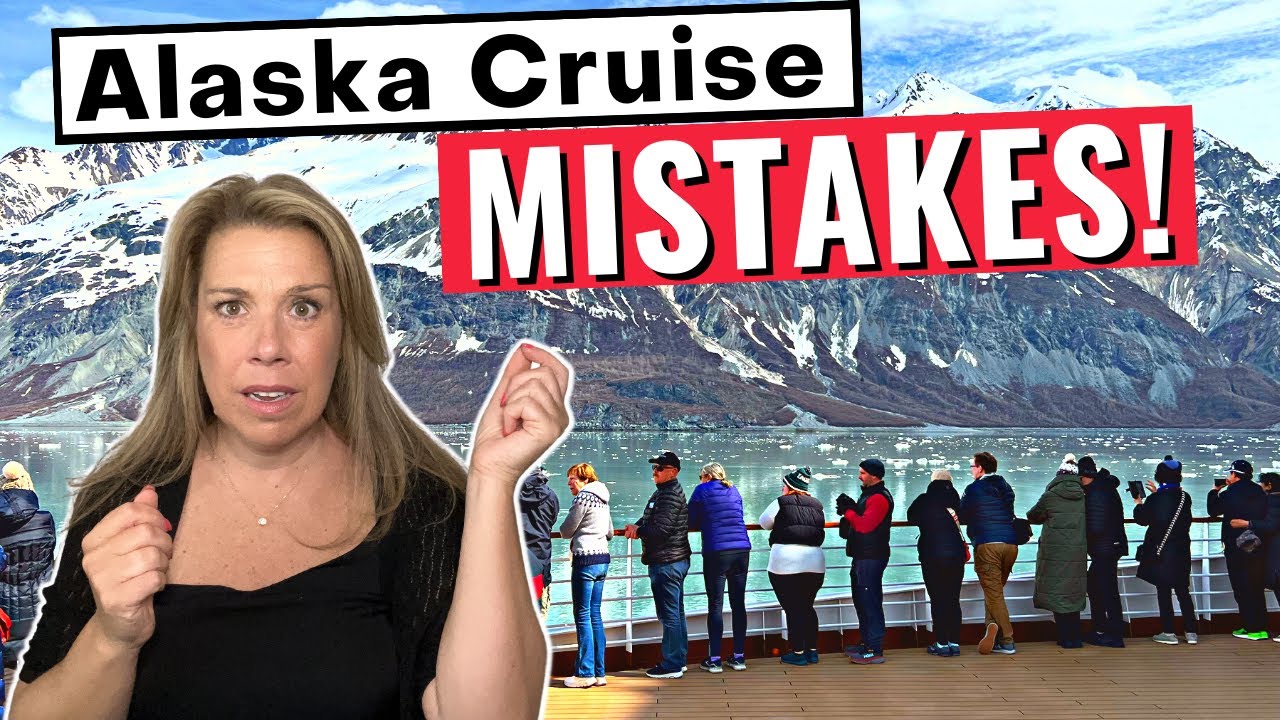
Alaska’s cruise industry, while vital to the state’s economy, often faces criticism regarding the revenue generated through municipal cruise taxes. This section explores alternative approaches to addressing these concerns, comparing them to the proposed offset mechanisms, and analyzing their respective strengths, weaknesses, and feasibility in the Alaskan context. Understanding these alternatives is crucial for developing a comprehensive and effective solution.
Alternative Approaches to Addressing Cruise Tax Concerns
Various approaches exist beyond the proposed offset mechanisms for managing cruise tax revenue concerns. These alternatives can be categorized based on their impact on cruise lines, municipalities, and the broader Alaskan economy.
- Negotiated Tax Agreements: Cruise lines and municipalities could negotiate tax agreements that involve reduced taxes for certain types of investments or community initiatives. This approach requires careful negotiation to ensure both sides benefit, preventing potential inequities and disputes.
- Targeted Investment Programs: Municipalities could allocate a portion of cruise tax revenue toward infrastructure projects that specifically benefit cruise tourism. This strategy can stimulate economic growth by creating jobs and enhancing visitor experiences.
- Regional Tourism Development Funds: A regional approach could establish funds that redistribute cruise tax revenue to less-visited areas within Alaska. This can promote economic diversification and tourism beyond the most popular destinations, promoting a more balanced distribution of benefits.
- Cruise Tax Rebates/Incentives: Offering rebates or incentives to cruise lines that adhere to specific environmental standards or invest in local communities can encourage responsible tourism practices. However, the design of such programs must be carefully considered to prevent misuse and ensure they achieve their intended goals.
Comparison of Proposed Offset Mechanisms with Alternative Solutions
Comparing the proposed offset mechanisms with alternative solutions necessitates a nuanced perspective, recognizing the potential advantages and disadvantages of each. The proposed offset mechanisms, while focused on directly offsetting cruise taxes, might not always be the most comprehensive approach to address the complex issues surrounding cruise tourism.
Alaska’s proposal to offset municipal cruise taxes is certainly interesting, but it’s worth noting that Adventuresmith has also announced a fantastic new Hawaii cruise offering. With a variety of itineraries and onboard experiences, this new cruise line could offer an appealing alternative, especially if you’re looking for something different. Ultimately, though, Alaska’s tax offset strategy will still be a key factor in the future of cruise tourism there.
adventuresmith announces hawaii cruise offering
| Approach | Strengths | Weaknesses | Feasibility |
|---|---|---|---|
| Proposed Offset Mechanisms | Directly addresses cruise tax concerns, potentially creating more immediate revenue streams. | May not address the broader issues of cruise tourism impact, could create dependence on cruise tax. | Medium, contingent on effective implementation and ongoing monitoring. |
| Negotiated Tax Agreements | Can tailor agreements to specific needs and investments, fostering collaboration. | Complex negotiation process, may not always yield equitable results. | Low, requires strong negotiating positions and willingness to compromise. |
| Targeted Investment Programs | Stimulates local economic growth through infrastructure improvements. | Requires careful planning to avoid misallocation of funds, potential delays. | Medium, contingent on project prioritization and execution. |
| Regional Tourism Development Funds | Promotes economic diversification, enhances tourism experiences. | Requires inter-municipal cooperation and consensus building, potential for inequitable distribution. | Low, depends on strong regional cooperation and governance structures. |
| Cruise Tax Rebates/Incentives | Can encourage responsible tourism practices and investments. | Requires strict monitoring and evaluation to prevent misuse and ensure effectiveness, potential for loopholes. | Medium, depends on effective monitoring and evaluation mechanisms. |
Feasibility of Implementing Alternatives in the Alaskan Context
The feasibility of each alternative depends on the specific Alaskan context. Factors such as existing regulatory frameworks, political will, and the willingness of stakeholders to collaborate play crucial roles in the successful implementation of any approach. Successfully navigating these challenges is critical to achieving sustainable economic growth in Alaska.
Potential Implementation Strategies
Alaska’s municipal cruise tax offset proposal presents a unique opportunity to stimulate local economies while mitigating the negative impacts of cruise tourism. Successful implementation requires a well-defined strategy, clear communication, and robust stakeholder engagement. This section Artikels potential strategies for implementing the proposed offset, emphasizing the importance of transparency and collaboration.
Phased Implementation
A phased approach to implementing the offset is crucial for managing potential disruptions and ensuring smooth integration into existing municipal structures. This involves a gradual introduction of the offset program, allowing for adjustments and refinement based on initial data and feedback.
- Phase 1: Pilot Program: Implementing the offset in a select group of municipalities would serve as a pilot program. This allows for testing the offset mechanism in a controlled environment, gathering data on its effectiveness, and identifying potential challenges before widespread implementation.
- Phase 2: Expanded Implementation: Based on the success of the pilot program, the offset program can be expanded to other municipalities. This phased approach allows for flexibility and adaptation based on real-world outcomes.
- Phase 3: Refinement and Optimization: Continuous monitoring and evaluation of the program’s impact across all participating municipalities would enable refinements and optimizations to the offset mechanism.
Integration with Existing Governance Structures
The proposed offset must be integrated seamlessly into existing municipal budgets and governance structures. This requires clear lines of communication and collaboration between municipal officials, tourism boards, and the state government.
Alaska’s proposal to offset municipal cruise taxes is an interesting move, considering the potential ripple effects. This is a clever way to potentially mitigate some of the financial burdens on local governments. Meanwhile, it’s also noteworthy that Mondovi will soon be under Emplify Health, which suggests a broader trend of healthcare transitions in the industry. This could have a direct or indirect impact on Alaska’s cruise industry, which might find themselves needing to adapt.
Ultimately, the success of Alaska’s tax offset proposal will likely depend on how effectively it addresses these wider economic shifts. mondovi will soon be under emplify health
- Dedicated Funding Mechanisms: Establishing a dedicated funding stream for the offset program within municipal budgets would ensure financial stability and predictability.
- Inter-Agency Collaboration: Creating a working group comprised of representatives from relevant municipal departments (finance, tourism, economic development) would facilitate communication and collaboration in the implementation process.
- Transparency and Accountability: Public reporting on the program’s performance, including allocation of funds, would foster transparency and accountability.
Example Implementation Strategies
Successful examples of implementing similar programs from other jurisdictions can provide valuable insights.
- Tourism Impact Fees in Coastal Communities: Many coastal communities in the United States and internationally have implemented tourism impact fees, successfully funding local infrastructure projects. The successful models highlight the financial viability of dedicated tourism revenue streams.
- Revenue Sharing Models: Examples of revenue sharing between the state and municipalities for various programs can be examined. These models offer a blueprint for collaboration and distribution of funding.
- Public-Private Partnerships: Public-private partnerships can help leverage private sector expertise and resources to streamline the implementation process. These partnerships can facilitate project development and implementation.
Detailed Implementation Steps
The following steps illustrate the process of implementing the offset program:
| Step | Description |
|---|---|
| 1 | Assessment: Conduct a thorough assessment of current municipal budgets, tourism revenue, and existing financial policies. |
| 2 | Budget Allocation: Develop a detailed budget allocation plan for the offset program, outlining the specific amount of funding and its intended use. |
| 3 | Regulations and Procedures: Establish clear regulations and procedures for administering the offset program, ensuring transparency and accountability. |
| 4 | Public Outreach: Communicate the program’s details and benefits to the public through various channels. |
| 5 | Implementation: Implement the offset program in accordance with established regulations and procedures. |
| 6 | Monitoring and Evaluation: Continuously monitor and evaluate the program’s effectiveness and impact. |
Flowchart of Implementation
(A visual flowchart, though not a text-based image, would illustrate the steps clearly. It would show the interconnectedness of the assessment, budget allocation, regulatory development, public outreach, implementation, and monitoring stages.)
Concluding Remarks
In conclusion, Alaska’s proposal to offset municipal cruise taxes presents a complex interplay of economic, social, and environmental factors. While potentially boosting local economies and community relations, the initiative also raises concerns about the potential for negative impacts on the cruise industry and the delicate balance of the local ecosystem. The future of this proposal hinges on careful consideration of these various facets, along with public engagement and thoughtful stakeholder dialogue.
Detailed FAQs
What are the different types of cruise taxes collected in Alaska?
Alaska collects various cruise taxes, potentially including taxes on passenger fees, vessel berthing, and ancillary services. The specific types will depend on the municipality and its governing regulations.
What are the potential negative economic effects of the proposed offsets?
Potential negative effects could include reduced revenue for municipalities if the offsets are substantial, or potential shifts in cruise ship itineraries if the offset doesn’t fully compensate for the tax burden. The exact impacts depend on the specifics of the offset program.
How will the proposed offsets impact cruise ship operators?
The impact on cruise ship operators will depend on the specifics of the offset program. If the offsets reduce the tax burden, operators may see an improvement in their profitability, leading to increased service in the area. Conversely, if the offsets are insufficient, it could lead to a negative impact on their operations.
What is the current public perception of cruise taxes in Alaska?
Public perception of cruise taxes in Alaska is likely varied, with some supporting the taxes for funding local projects, and others opposing them due to perceived financial burdens on the cruise industry and its impact on tourism. The specific details of the proposal will be key to influencing this public perception.


